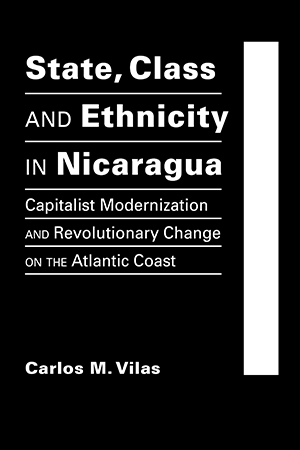
- 1989/221 pages
State, Class, and Ethnicity in Nicaragua:
Capitalist Modernization and Revolutionary Change on the Atlantic Coast
Exploring the origins of Nicaragua's internal conflicts, Vilas identifies and discusses the ways in which the Coast has been conceptualized, both before and after the revolution, by the groups that act within the Nicaraguan state. He analyzes the social bases of those groups, characterizes the policies inspired by their differing viewpoints, and considers the changes that have been made in both state and region and the tensions, contradictions, and reactions those changes have produced. This historical approach allows a comparison of the Somoza government of the 1950s-1970s and the Ortega regime, as well as of the Costeno responses to them.
Vilas analyzes the tensions between the Coast's ethnic groups (Miskito, Sumu, Rama, Creole, and Garifuna) and the mestizo central revolutionary government as an accumulation of confronting territorial, socioeconomic, and ethnic ingredients—culminating in the confrontation of the state's goal to impose its authority on the Coast and the Costenos' goal to preserve their own identity and authority structures. He does not, however, ignore the role of intervening external actors.
Although not discounting the continuing areas of conflict between the central government and the region, Vilas is optimistic about the outcome in general of Nicaragua's development process and, specifically, of the creation of an autonomous government, supported by indigenous ethnic groups, in the Coast region.





